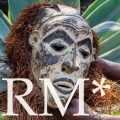Panggah Ardiyansyah writes:
To explore these questions, we can look beyond national narratives and focus on Nias, a small island off the north-western coast of Sumatra, Indonesia. In this blog, I aim to identify gaps in the current repatriation process, specifically in relation to the power dynamics between national and local stakeholders, as well as issues of inclusion and exclusion in heritage practices.
The Nias Heritage Museum, established in 1991, is dedicated to preserving the culture of Nias, including objects tied to the island’s history, communal feasts, daily life, and ancestral rituals.
The museum was founded by Pastor Johannes M. Hammerle, a German-born Catholic missionary who arrived in Nias in 1971. During our conversation in 2022, he shared that many locals offered to sell him their belongings when he inquired about the names of objects he encountered.
Due to financial pressures at the time, it was common for people to sell items, including gold objects, in larger cities like Medan in North Sumatra or Jakarta, Indonesia’s capital. While stationed in Teluk Dalam, on the island’s southern coast, from 1978 to 1987, Pastor Johannes’ collection grew significantly as he acquired many affordable objects.
With support from the Capuchin Order, he initiated the creation of the Nias Heritage Museum in Gunungsitoli, the island’s largest town, where he also recruited and trained a dedicated team of local staff. The museum began repatriating objects from Germany and the Netherlands in the late 2000s as part of its collection-building efforts.
As the museum gained recognition beyond the island, Pastor Johannes was approached by Horst Krank, a former Protestant missionary, while on holiday in Germany. After visiting the museum in 2007, Krank decided to return a crocodile skin battle vest that he had collected during his time as a deacon in Nias. This unique vest remains the only one of its kind on the island.
These case studies from Nias highlight repatriation efforts driven by convenience. Objects were returned as donations when the museum was actively building its collection. Notably, the returns took place without the fanfare typically associated with national-level repatriations. They simply entered the museum’s collection.
Nonetheless, the returns are quietly celebrated, with their stories documented and shared through the museum’s object labels.


